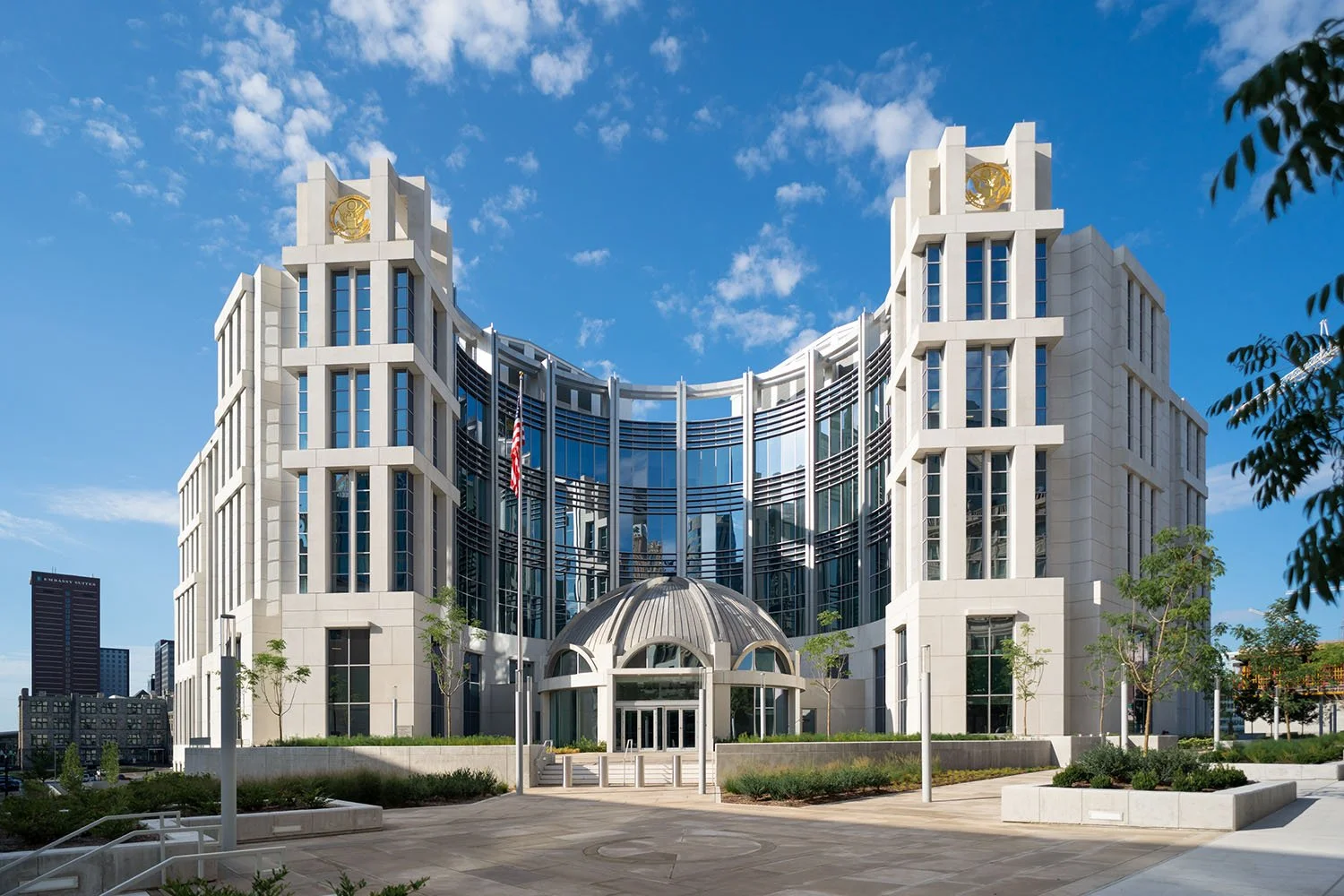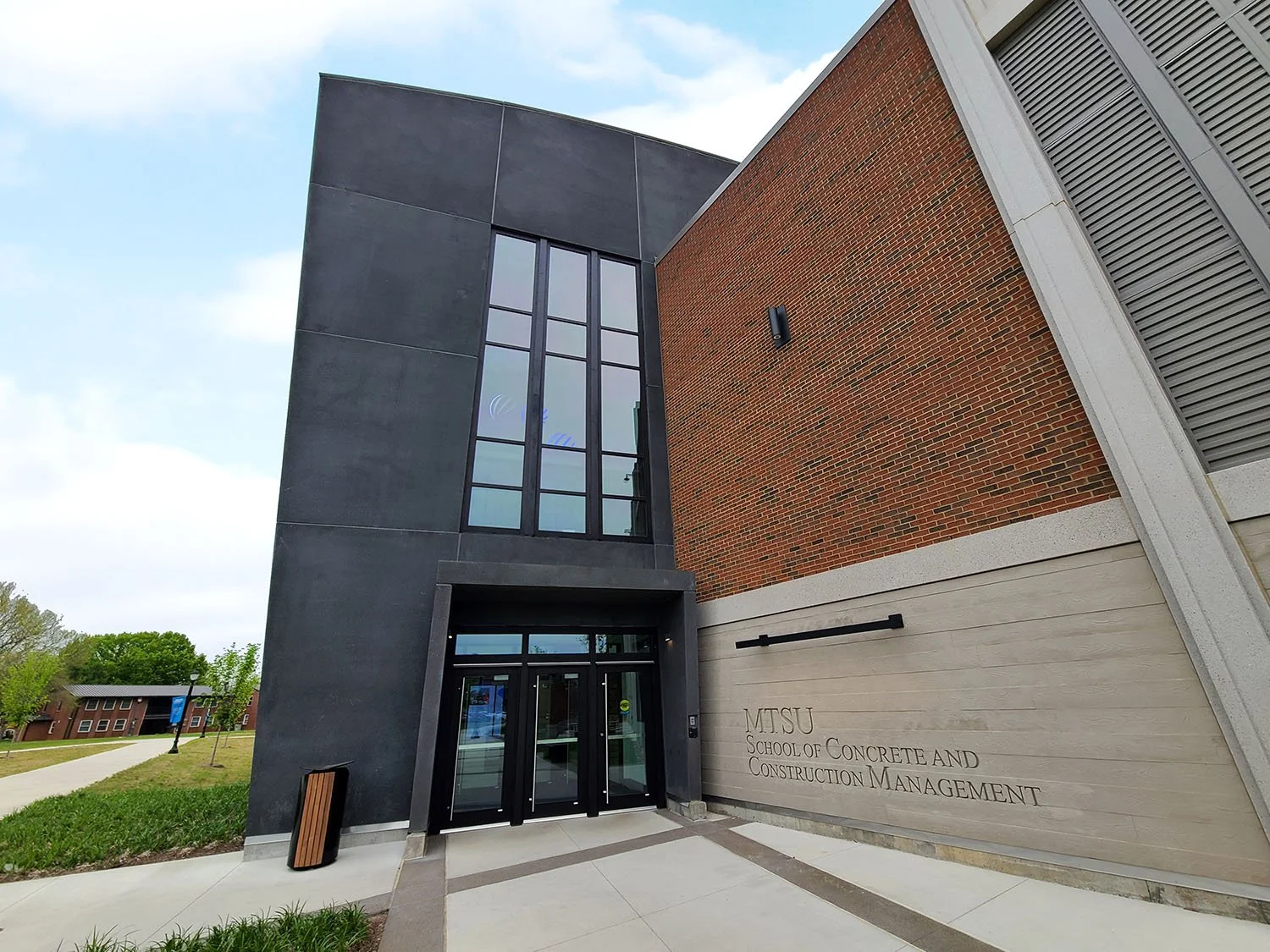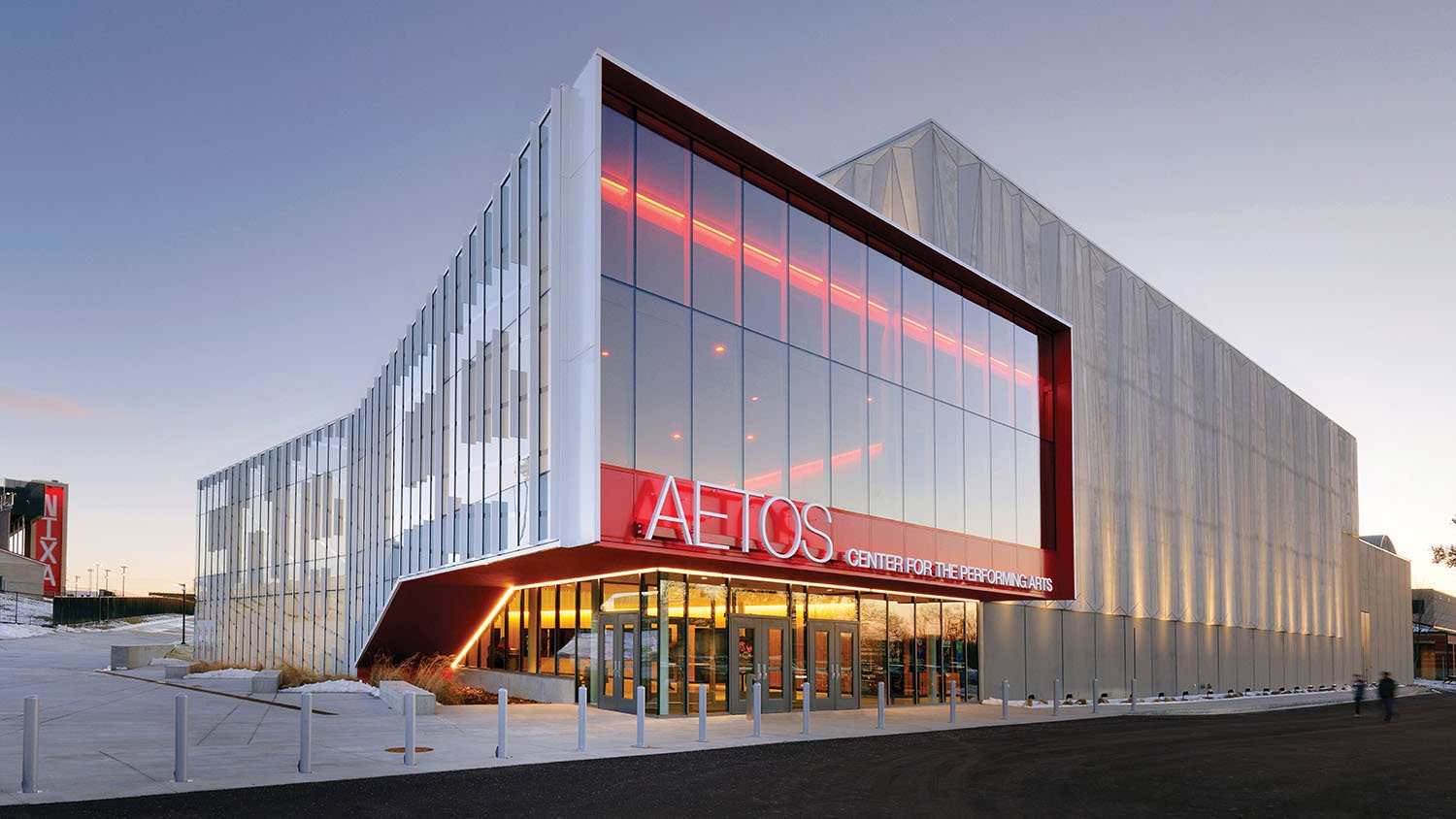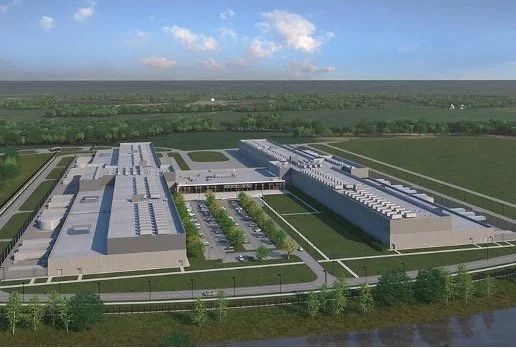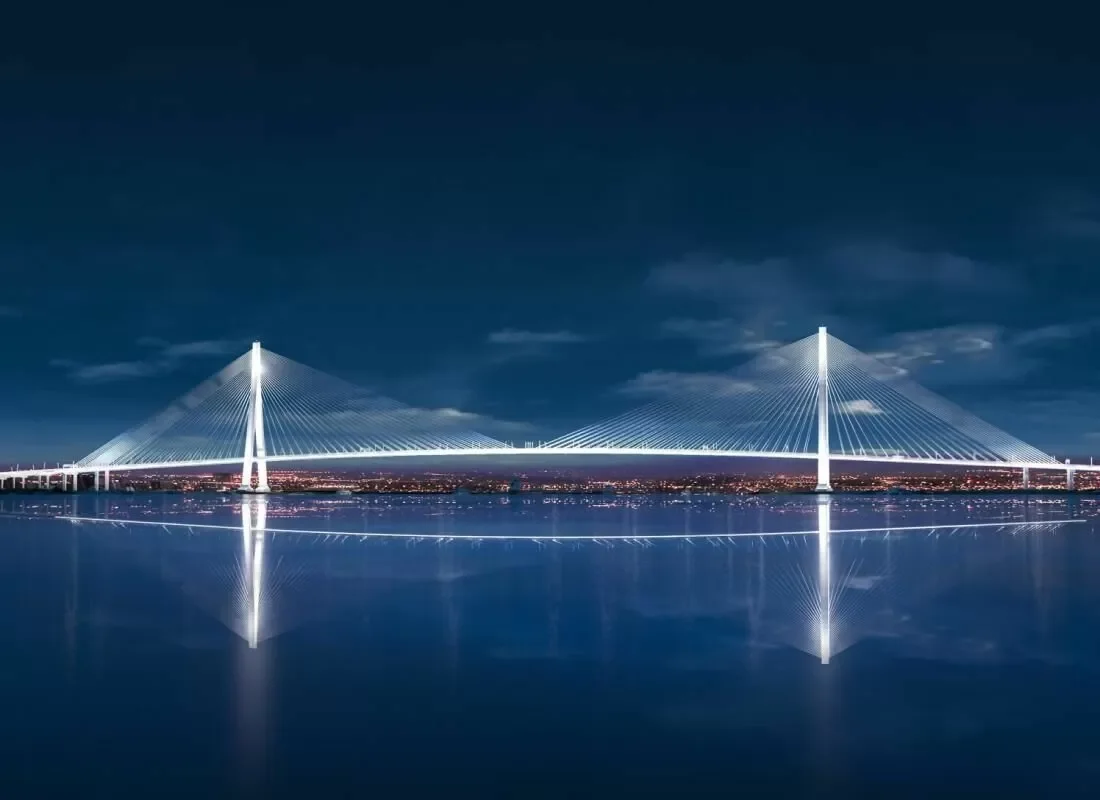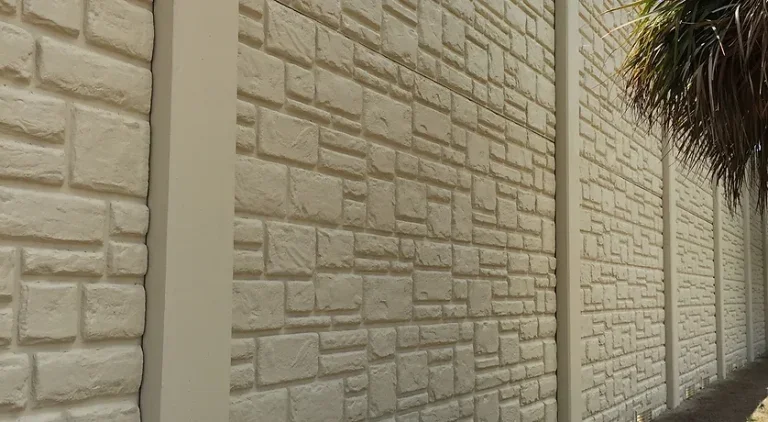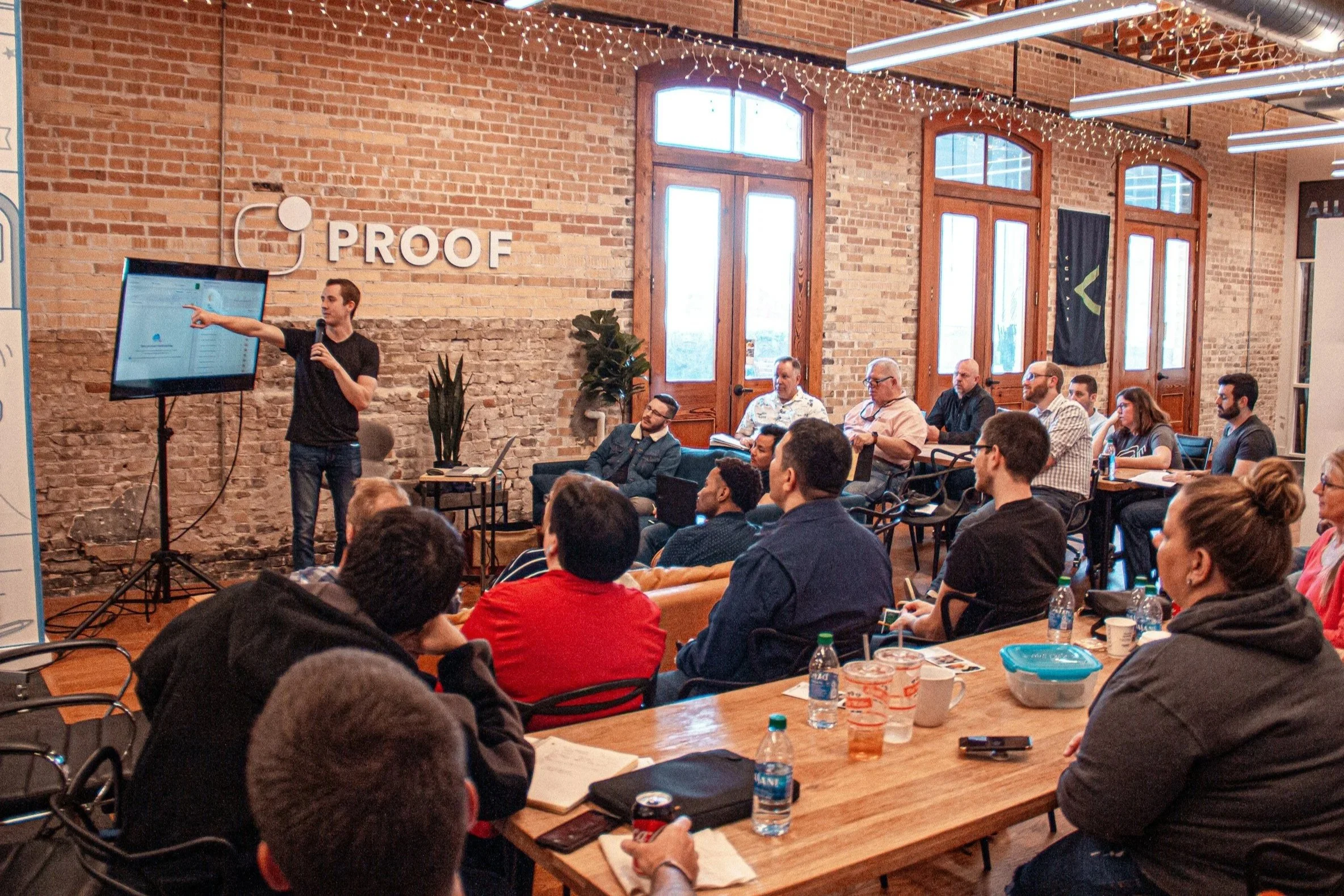

Continuing Education Resources
The PCI Central Region is a registered AIA/CES provider committed to advancing design through education.
Our programs showcase how sustainable precast concrete systems deliver unmatched performance, design versatility, and cost efficiency to meet the needs of today’s most demanding building projects.
PCI Central Region Lunch-and-Learn Programs
-
![]()
Architectural Precast Concrete: Systems, Aesthetics, and Performance (PC222a)
1 LU|HSW
Description: This course offers a detailed look at architectural precast concrete systems and their use in modern buildings. Attendees will explore how precast can meet aesthetic goals while supporting key performance criteria related to safety, durability, and sustainability. The course includes a review of finishes, surface treatments, and design strategies that allow precast to mimic or surpass the appearance of traditional materials. Participants will also gain an understanding of how precast integrates with other building systems, and how quality control measures, such as PCI certification, ensure performance consistency and long-term value.
Learning Objectives:
Describe the aesthetic versatility of architectural precast concrete, including available surface treatments, coloration methods, and formwork techniques used to meet complex design goals.Explain how architectural precast systems enhance building safety and durability, including fire resistance, weather protection, and reduced on-site construction risk through prefabrication.
Evaluate the environmental and wellness benefits of architectural precast, including material efficiency, thermal mass, reduced maintenance, and improved building envelope performance.
Understand the role of PCI Certified production in delivering high-quality, code-compliant precast components, ensuring consistency in finish, strength, and integration with other systems.
Identify how architectural precast contributes to resilient, long-lasting structures, particularly in regions facing severe weather, seismic events, or high durability demands..
-
![]()
Precast Concrete Solutions - Hollowcore Floor and Roof Systems (P2917a)
1 LU|HSW
Description: An introductory course designed to acquaint the design professional with the basic components of hollowcore precast floor and roof systems. Design options, examples, and advantages will be presented. The attendee will also see numerous examples of hollowcore planks have been integrated into Precast Concrete building systems.
Learning Objectives:
Discuss the advantages of precast/prestressed concrete products and the quality control assurances of the PCI certification program.
Understand the design and manufacturing process of hollowcore floor and roof systems.
Explore examples of hollowcore applications.
Identify the supporting structural systems related to hollowcore floor and roof systems.
Describe key considerations in the hollowcore installation process.
Examine the advantages specific to integrating hollowcore floor and roof systems into the construction process.
Illustrate the use of hollowcore floor and roof systems through a comprehensive case study.
-
![]()
Precast Concrete Storm Shelters: Design Considerations (PC100a)
1 LU|HSW
Description: This course introduces the fundamental code requirements and design considerations for storm shelters that comply with FEMA P-361 and ICC 500, with a focus on the use of precast concrete systems. Participants will explore typical components, framing strategies, and detailing approaches used in precast shelter design. The course highlights the safety, structural, aesthetic, and sustainable benefits of precast concrete, and provides real-world examples that demonstrate how these systems can be effectively integrated into both new and existing projects. Common design questions and lessons learned from past applications will also be addressed.
Learning Objectives:
Understand the key code requirements, loading conditions, and design considerations for FEMA P-361 and ICC 500-compliant storm shelters.Identify the typical components, framing strategies, and detailing of precast concrete storm shelters.
Evaluate the safety, structural, aesthetic, and sustainable benefits of using precast concrete systems in shelter design.
Apply lessons learned and address common questions when designing or integrating precast concrete storm shelters into new or existing projects.
-
![]()
Precast Concrete Solutions: Industrial Structures (PC213a)
1 LU|HSW
Description: This course explores the structural, sustainable, and economic advantages of precast and prestressed concrete systems in the design and construction of industrial buildings. Attendees will gain insights into the performance benefits of insulated sandwich wall panels, including their role in improving thermal efficiency, durability, and construction speed. Comparative analysis of common building materials will help participants make informed decisions when designing for warehouses, manufacturing facilities, and other industrial applications. The course includes discussion of connection details, design diagrams, and key considerations for selecting precast systems in a wide variety of industrial environments.
Learning Objectives:
Explain the structural, safety, and performance benefits of using precast and prestressed concrete in industrial buildings, particularly in load-bearing and thermal envelope applications.Evaluate the economic and sustainable advantages of using precast concrete, including reduced construction time, durability, energy efficiency, and lower life-cycle maintenance costs.
Identify a range of industrial applications for precast concrete systems, including warehouses, distribution centers, data centers, and manufacturing facilities, and how these systems contribute to code compliance and occupant protection.
Compare precast concrete with other structural materials to make informed material selections that improve project outcomes in safety, longevity, and environmental impact.
-
![]()
Sustainability Attributes of Precast Concrete (PC221a)
1 LU|HSW
Description: This course explores the sustainability benefits of precast concrete, highlighting its role in creating more efficient, resilient, and environmentally responsible buildings. Key topics include the advantages of off-site construction, long-term durability, climate-adaptive resilience, energy efficiency, indoor environmental quality, and material efficiency. The course also examines the current sustainability initiatives led by PCI and outlines anticipated advancements in the industry.
Learning Objectives:
Explore how off-site production of precast concrete reduces on-site labor demands, minimizes material waste, shortens construction schedules, and enhances overall quality.Understand the inherent longevity, durability, and climate-adaptive resilience of precast concrete and how these attributes contribute to more sustainable, long-lasting structures.
Examine the energy efficiency benefits of precast concrete, including its high R-values and thermal mass, and how these features help reduce operational energy use and lower carbon emissions over a building’s lifecycle.
Review the current state of sustainability efforts within the precast concrete industry, including PCI's initiatives, and identify emerging innovations and improvements on the horizon.
-
![]()
Precast Concrete Solutions - Plant Tour (PC30PT1, PC30PT2, PC30PT3)
1, 2, or 3 LU|HSW
Description: This in-person tour offers attendees a unique, first-hand opportunity to observe how engineering designs and construction details are executed in a working precast concrete manufacturing facility. Participants will follow the full production process—from engineering and form set-up to casting, finishing, and quality control. The course will provide a comprehensive understanding of the capabilities of precast and prestressed concrete systems and how these components integrate into the overall building system. Attendees will also learn how to specify precast concrete accurately and safely in architectural and structural designs.
Learning Objectives:
Observe the full manufacturing process of precast and prestressed concrete products—such as form setup, reinforcement placement, casting, and finishing—while identifying key quality control measures that enhance structural safety and durability.Discuss how precast concrete contributes to improved building performance through energy efficiency, reduced construction waste, and LEED credit opportunities, supporting sustainable and environmentally responsible design.
Explain the inherent material properties of precast concrete—including strength, durability, fire resistance, and thermal mass—and analyze how these characteristics promote building safety, longevity, and resilience in diverse applications.
Review the certification and design standards required in the production of PCI Certified precast/prestressed concrete, with emphasis on how these standards ensure reliability, consistency, and adherence to best practices for health, safety, and welfare in the built environment.
-
![]()
Integrated Design with Precast Concrete Systems (PC216a)
1 LU|HSW
Description: This course provides a comprehensive introduction to precast concrete as both a building material and a structural system. Participants will explore the integrated design possibilities of precast components in addressing functional, aesthetic, and environmental demands across a variety of building types. Through case studies and real-world applications, the course will illustrate how precast concrete can effectively solve spatial challenges, streamline construction processes, and support long-term performance. Emphasis will be placed on the health, safety, and welfare benefits of using precast systems, including enhanced quality control, durability, and sustainability.
Learning Objectives:
Explain how quality-controlled manufacturing of precast components enhances structural safety and reliability, ensuring code compliance and minimizing risk during construction and throughout the building’s life.
Describe the sustainable design attributes of precast concrete systems, including their contribution to reduced construction waste, energy efficiency, and occupant health through improved indoor air quality and material durability.
Demonstrate how precast concrete design flexibility supports creative architectural expression while maintaining essential safety and welfare standards, such as accessibility, resilience, and occupant comfort.
Evaluate the economic and lifecycle performance benefits of precast concrete systems in reducing initial construction costs and long-term maintenance requirements.
-
![]()
Precast/Prestressed Bridge Design and Construction (PC217a)
1 LU|HSW
Description: This course introduces participants to the structural and performance advantages of precast and prestressed concrete bridge systems, focusing on their role in durable, cost-effective, and resilient infrastructure. Through an overview of material properties, system components, and case-based examples, participants will explore how these systems meet current transportation demands, safety standards, and sustainability goals. Special emphasis is given to Accelerated Bridge Construction (ABC) techniques, evolving DOT requirements, and the lifecycle benefits of precast/prestressed design. Attendees will leave with practical insights for specifying, designing, or evaluating bridge structures built using precast components.
Learning Objectives:
Explain the structural, safety, and durability advantages of using precast and prestressed concrete bridge systems, including their fire resistance, weather resilience, and performance under heavy loading.
Evaluate the long-term economic and environmental sustainability benefits of precast/prestressed bridge construction.
Describe the role of Accelerated Bridge Construction (ABC) and how precast systems support faster, safer, and less disruptive infrastructure delivery while meeting DOT requirements.
Distinguish between cast-in-place and total precast bridge systems, understanding how system selection affects site safety, construction time, material quality, and overall reliability.
Recognize trends in transportation infrastructure that are increasing the demand for precast/prestressed bridge components, including sustainability mandates, climate adaptation, and innovations in modular construction.
-
![]()
Precast Concrete Solutions: Educational Facilities (PC206a)
1 LU|HSW
Description: This course examines the use of total precast concrete systems in the design and construction of educational facilities, with a focus on K-12 and higher education environments. Through case studies of completed school projects, participants will explore how precast systems address performance needs such as structural resilience, design adaptability, speed of construction, and energy efficiency. Special attention will be given to the use of precast concrete in designing schools that also function as storm shelters, providing critical life safety during extreme weather events. The course will also highlight the environmental and sustainable attributes of precast systems, including material efficiency, durability, and reduced lifecycle environmental impact. Participants will learn how PCI Certified precast products support high-quality, long-lasting, and sustainable educational environments.
Learning Objectives:
Describe the structural, aesthetic, and functional benefits of total precast concrete systems in school design, including their ability to meet code requirements for storm shelter construction.
Analyze the sustainable features of precast concrete—including durability, thermal efficiency, and lifecycle environmental performance—and their contribution to green building certifications.
Evaluate real-world case studies of school projects where precast insulated wall panels and complete precast systems were selected to meet safety, scheduling, and cost-efficiency goals.
Explain how PCI Certified precast products and facilities support job site safety, material quality control, and performance reliability in educational settings.
-
![]()
Precast Concrete Solutions: Stadium Design (PC209a)
1 LU|HSW
Description: This course explores how precast and prestressed concrete systems serve as essential solutions in the design and construction of modern stadiums and sports venues. Participants will gain an understanding of precast concrete as both a material and a structural system, including its inherent durability, safety, and aesthetic versatility. Through a series of mini case studies and real-world project examples, the course illustrates how precast components—such as risers, seating units, and façade panels—contribute to the functionality, sustainability, and long-term performance of stadium design.
Learning Objectives:
Describe the structural and architectural benefits of using precast and prestressed concrete in stadium and arena construction, with emphasis on its strength, fire resistance, and seismic performance.
Analyze case studies of completed stadium projects to evaluate how precast concrete systems address challenges related to site logistics, construction schedules, and material durability.
Identify the key precast concrete components and systems commonly used in stadium design, including their role in promoting occupant safety and structural resilience.
Discuss the significance of PCI plant certification in ensuring quality control, material consistency, and compliance with industry safety and performance standards.
-
![]()
Precast Concrete Solutions - Precast Parking Structures: Design That Delivers on the Precast Promise (PC2PAa)
1 LU|HSW
Description: This presentation is an introductory course designed to acquaint the design professional with the basic precast concrete components and design coordination issues to be considered in the layout and construction of a precast parking structure. Structural design and construction considerations when specifying architectural precast concrete will be discussed.
Learning Objectives:
Preview various parking garage applications to understand the versatility of precast.
Gain a deeper understanding of precast parking system design by reviewing overall practices for: Aesthetics Structural considerations Functional, resilience and safety considerations
Review a recently completed project as a case study from the architectural designer.
Review expected maintenance for various environmental conditions
-
![]()
Precast Concrete Solutions - Precast Data Centers (PC2DCa)
1 LU|HSW
Description: Data Centers are uniquely suited to precast concrete as a construction material. These facilities require high physical security for the sensitive electronic equipment housed, and robust resiliency to protect them from environmental and malicious events. As a fast-growing sector of construction, speed of erection is essential to get each Data Center up and running quickly and economically. Precast Concrete enables large spans creating open space for maximum flexibility. Structural design and construction considerations when specifying architectural precast concrete will be discussed.
Learning Objectives:
Discuss the seemingly endless cloud computing demand across the globe and review how precast concrete can satisfy owner’s requirements in the data center market.
Review the need to involve a Precaster in the early planning for a precast data center project and how precast mitigates hazards such as fire and storms.
Explore resiliency, sustainability, and durability as essential elements in Data Center design and functionality. Precast Concrete also inherently saves time in construction and maintenance.
Physical security for the equipment and operational security for the data are discussed. Explore all-precast building solutions for hyperscale data center construction and how it saves time and energy.
-
![]()
Advancements in Precast Design and Manufacturing (PC600a)
1 LU|HSW
Description: This course provides a comprehensive exploration of the evolving role of the Precast Specialty Engineer (SEOR) in advancing structural integrity, life safety, and sustainability in modern construction. Participants will examine how optimized precast concrete design enhances load-bearing capacity, seismic resilience, and long-term durability. The course also highlights the latest advancements in Building Information Modeling (BIM) and its impact on safety, coordination of fire-rated assemblies, and overall project efficiency. Additionally, attendees will analyze sustainable precast concrete strategies that reduce embodied carbon and improve environmental resilience through life cycle analysis and climate-adaptive design. Through the review of exemplary regional projects, this course will demonstrate best practices in fire resistance, acoustic performance, and thermal efficiency, reinforcing the critical role of precast concrete in creating safe, high-performing built environments.
Learning Objectives:
Evaluate the role of the Precast Specialty Engineer (SEOR) in enhancing structural integrity and life safety through optimized precast concrete design, including load-bearing capacity, seismic resilience, and durability.Analyze how advancements in Building Information Modeling (BIM) improve safety and efficiency in construction by reducing jobsite hazards, enhancing coordination of fire-rated assemblies, and minimizing errors that could compromise building performance.
Examine strategies for reducing embodied carbon and enhancing the environmental resilience of structures through sustainable precast concrete solutions, including life cycle analysis, material selection, and climate-adaptive design.
Assess exemplary regional projects that integrate precast concrete to improve structural safety, occupant well-being, and environmental performance, demonstrating best practices in fire resistance, acoustic control, and thermal efficiency.
-
![]()
Precast Concrete Sustainable Solutions: Sound Walls (2910a)
1 LU|HSW
Description: This course explores the design, application, and performance of precast concrete sound walls in both roadway and residential settings. Participants will examine the functional and sustainable benefits of using precast systems, including their role in mitigating noise pollution and supporting long-term environmental and economic goals. The course will also provide an overview of key considerations in sound wall design, manufacturing, and erection, emphasizing the value of PCI Certification in ensuring quality and performance.
Learning Objectives:
Identify the health and welfare benefits of precast concrete sound walls in mitigating noise pollution and enhancing the quality of life for adjacent communities.
Explain the sustainable features of precast concrete, including durability, reduced construction waste, and long service life, which contribute to environmentally responsible design.
Describe the design and construction considerations for precast sound walls, including erection practices and the importance of PCI Certification in ensuring structural integrity and safety.
Evaluate the economic and design flexibility advantages that precast concrete provides to departments of transportation (DOTs) and design professionals in addressing diverse project needs.
-
![]()
Thin Brick Design (PCSTBD)
1 LU|HSW
Description: This course discusses the advantages of designing and specifying with Architectural Thin Brick for exterior and interior wall applications. Learn about this cost effective product and how it can be incorporated in most all commercial projects in the ever growing thin veneer market. This course gives insight to the specifications governing thin brick and thin brick installation methods. Participants will learn and compare the various types of thin brick, the many options for installation of this product, and the design considerations present in different installation methods.
Learning Objectives:
Define Thin Brick Production Materials & Specifications
Discuss Sustainable Advantages of Thin Brick
Describe Different Installation Methods for Thin Brick Faced Projects
Design Considerations – Explore Ways to Create Your Envisioned Façade.





